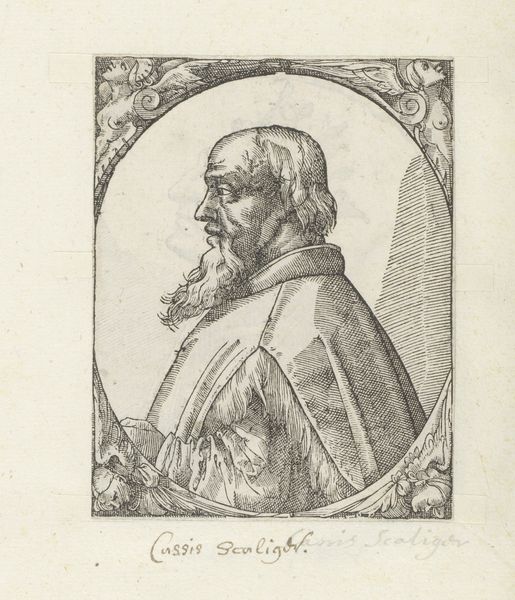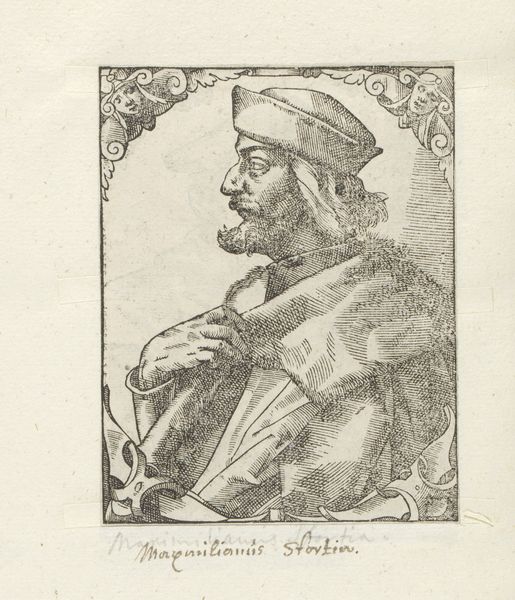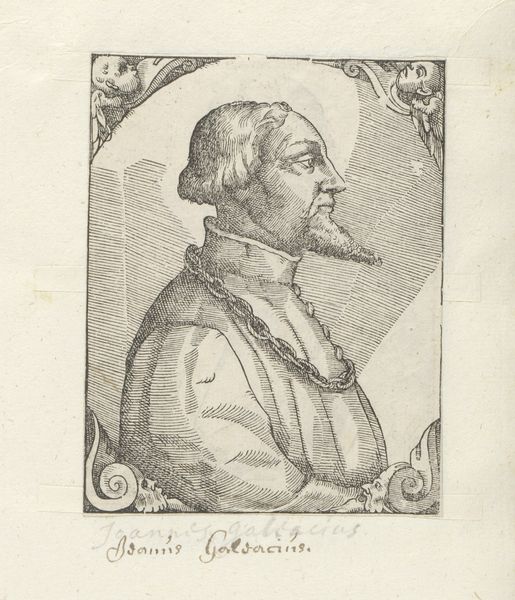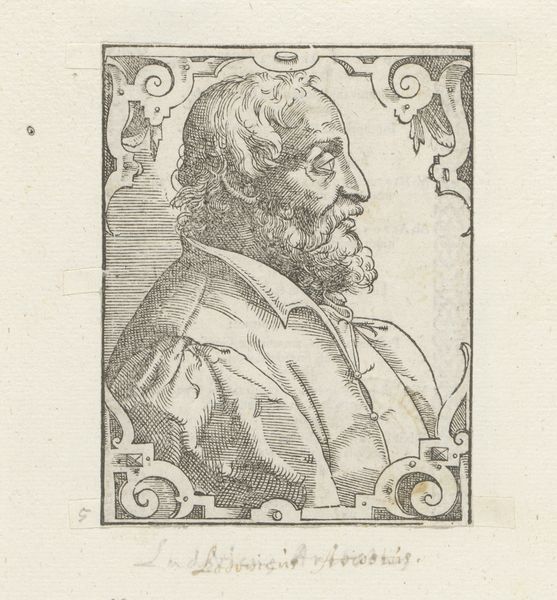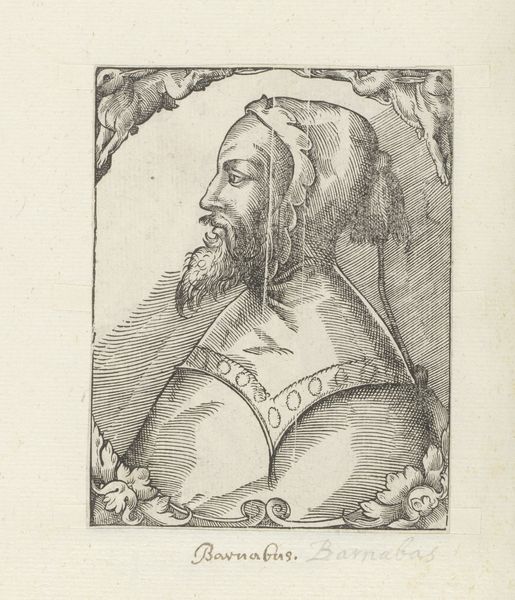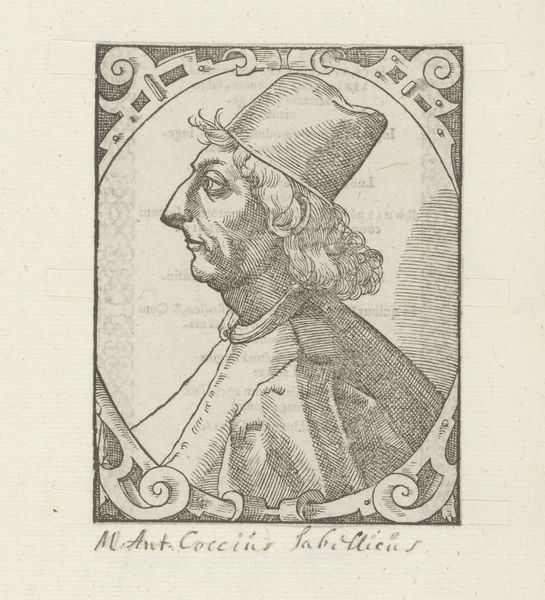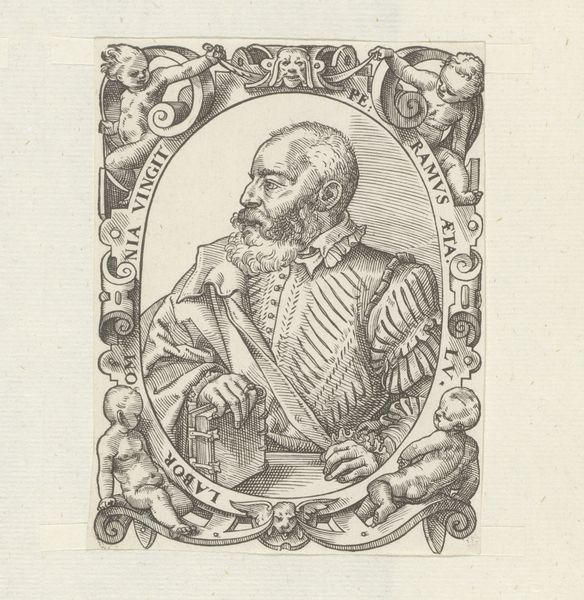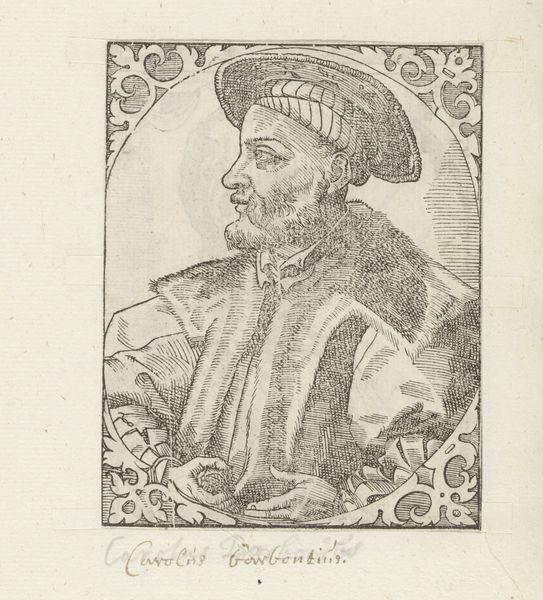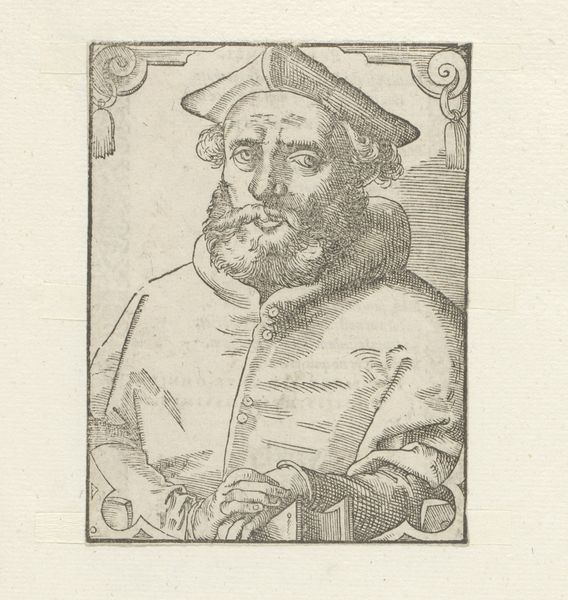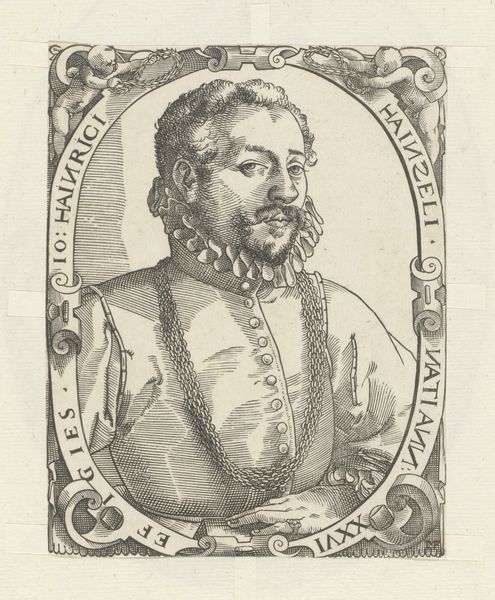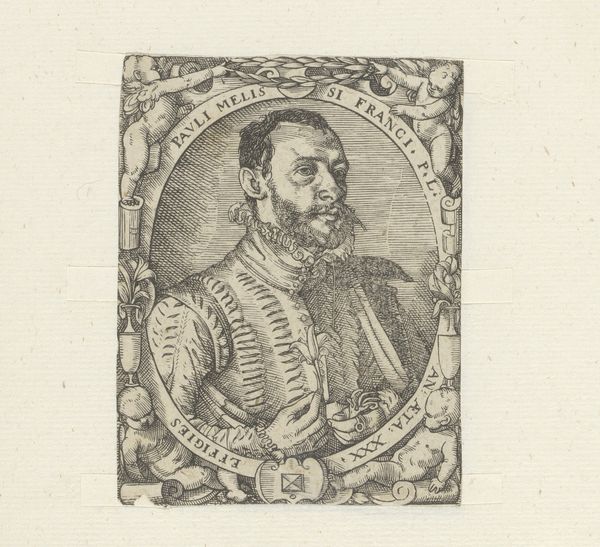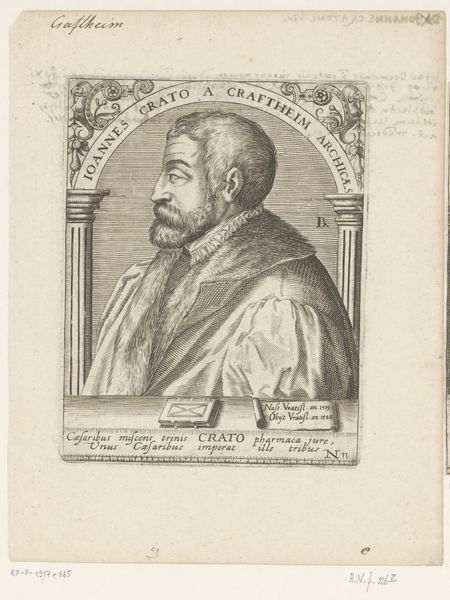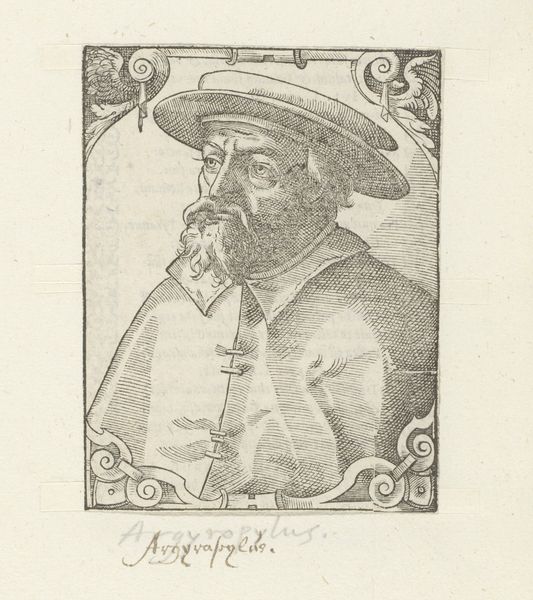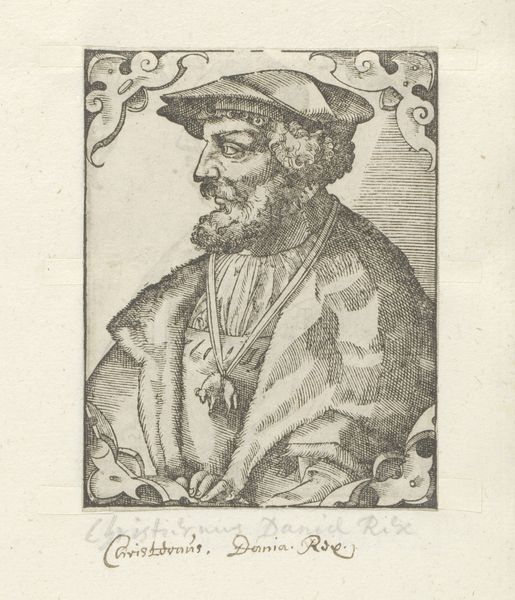
print, engraving
#
portrait
#
medieval
# print
#
old engraving style
#
history-painting
#
engraving
Dimensions: height 109 mm, width 85 mm
Copyright: Rijks Museum: Open Domain
Editor: Here we have an engraving, "Portret van Karel de Grote," or "Portrait of Charlemagne," dating back to sometime between 1549 and 1575, made by an anonymous artist. The fine lines give it a delicate yet authoritative feel. What strikes you most when you look at this image? Curator: I immediately see how symbols are used to construct and convey power. Notice how Charlemagne is framed – not just within the circular border, but also by the intricate designs on his garments. This creates a visual language, almost like a halo, that emphasizes his authority and reinforces his cultural significance, centuries after his reign. What message do you think that visual emphasis conveys to its audience? Editor: I guess it is a way to solidify his image as an important historical figure, but aren't the symbols mostly decorative? Curator: Not at all. These decorative elements, particularly the repeated geometric patterns, evoke a sense of order and divine right, crucial for rulers. Think about the power of repeated imagery, and its role in psychological impact – we see it across many cultures and religions. It creates a visual mantra, embedding Charlemagne’s power within the viewer’s consciousness. Editor: So it’s not just about pretty patterns, but a deliberate attempt to shape perception? Curator: Exactly. The visual cues tap into deeper cultural memories. The symbols associated with Charlemagne’s era link him to specific ideas of governance, religion, and imperial power. The image creates a chain reaction of associations, building a narrative that speaks of legacy and influence. It prompts us to consider how history is visually constructed and consumed. Editor: It’s amazing to think how much meaning can be packed into what I initially saw as just an old engraving! Curator: Indeed. And every line, every symbol, contributes to constructing his lasting presence in our minds. The past continues to speak, doesn't it?
Comments
No comments
Be the first to comment and join the conversation on the ultimate creative platform.
